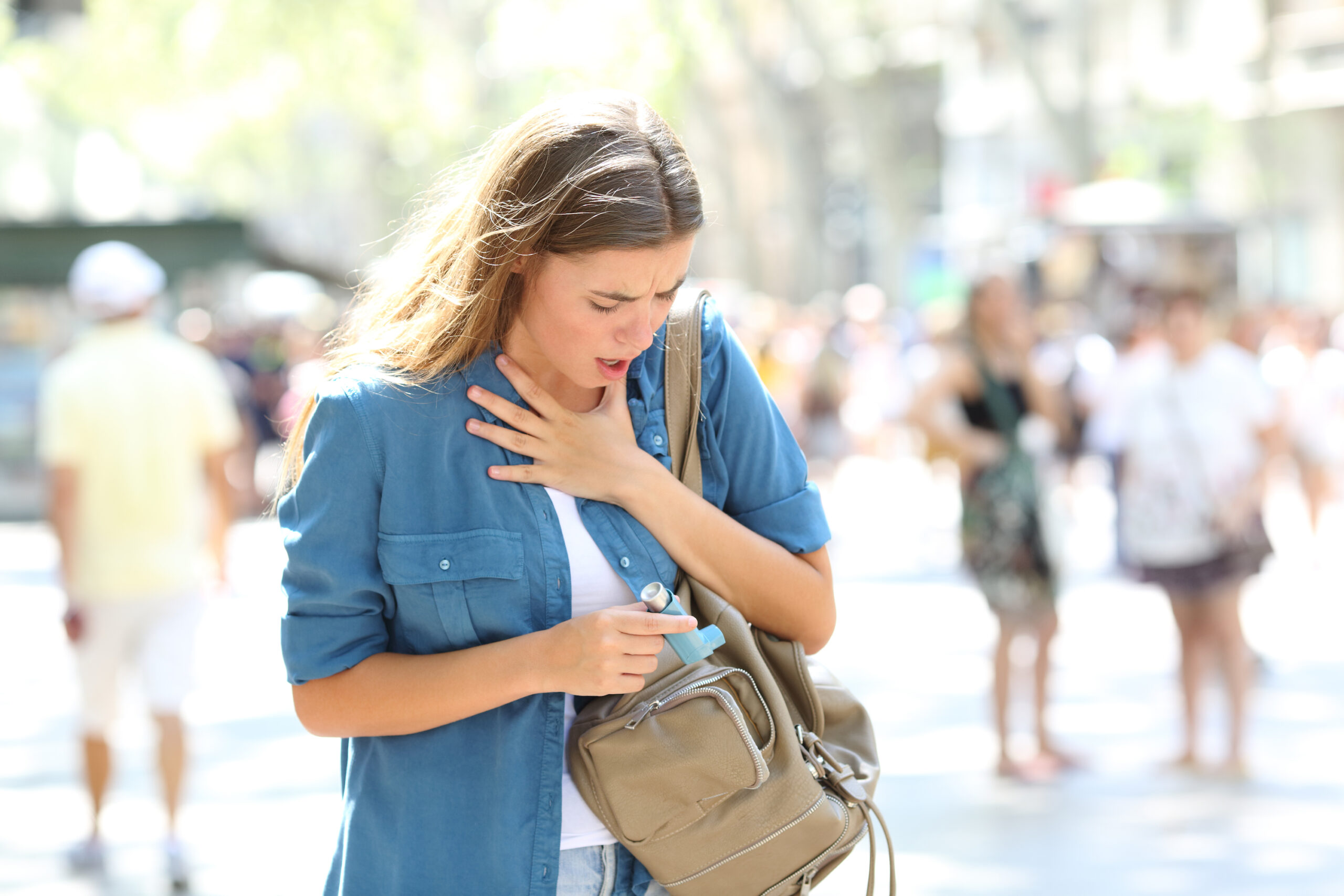Respiratory Emergencies
Definition of a Respiratory Emergency
Respiratory emergencies are fairly common, and these are due to many conditions that can cause the individual to be in respiratory distress and deteriorate further into respiratory failure and arrest. Respiratory arrest is caused by either absent or inadequate oxygenation and ventilation and is characterized by the complete absence of breathing but in the presence of a pulse. Respiratory problems can be further categorized as respiratory distress or respiratory failure.
Related Whiteboard: What is Respiratory Arrest?
Respiratory distress is a medical condition where the patient presents with an abnormal respiratory rate and effort. Respiratory failure occurs when a person with respiratory distress worsens because of poor oxygenation and ventilation, and respiratory arrest is imminent.

Strained Breathing
Common causes of respiratory emergencies include:
- Airway obstruction
- Asthma
- COPD
- Respiratory infections
- Chest trauma causing pneumothorax
- Heart failure
- Fluid accumulation in the lungs secondary to infection (pneumonia) or cancer
- Anaphylactic (allergic) reactions
- Pulmonary thrombosis
Related Whiteboard: Introduction to Asthma Exacerbation
Related Whiteboard: What is a Pneumothorax?
Related Video: Hs and Ts – Pulmonary Embolism
Signs and Symptoms of Respiratory Emergencies
Signs and symptoms to watch out for in respiratory emergencies include:
- The use of accessory muscles for breathing
- An increased respiratory effort characterized by chest retractions and nasal flaring that later becomes respiratory fatigue when not treated
- Rapid breathing that later becomes labored, slow breathing as the patient tires
- Abnormal airway sounds, including stridor, wheezing, grunting, and crackles
- Fast heart rate
- Pale, cool skin that may appear bluish in the lips and nailbeds (cyanosis)
- Changes in the level of consciousness
Related Video: How to Manage Respiratory Arrest in an Adult
First Aid Interventions for Respiratory Emergencies
Basic first aid for any respiratory emergency includes:
- Calling 9-1-1.
- Positioning the patient for comfort.
- Checking to see if there is a foreign body blocking the airway.
- Intervening if the patient is choking.
- Loosening the patient’s clothing in case it is causing constriction of breathing.
- Assisting the patient with using their inhaler if they have a relevant medical condition such as asthma.
- Keeping the patient from drinking or eating at this time to prevent aspiration.
- Maintaining an open airway.
A person who has observable noisy breathing that suddenly becomes quiet is cause for concern. The sudden change to quieter breathing may indicate that they have respiratory failure or respiratory arrest. Responders should prepare to perform high-quality CPR in this situation.
The Person in Respiratory Distress – Increased Work of Breathing with Regular Rate
- Responders perform the primary assessment.
- If the person is conscious or unconscious but breathing normally and has a pulse, responders should activate the emergency response system or dial 911.
- Responders remain with the patient while waiting for EMS to arrive.
- The patient is monitored and checked every 2 minutes for any changes while performing the primary assessment.
- If the patient deteriorates to more abnormal breathing patterns but still with a pulse, the next section’s actions should be performed as below.
- If the patient deteriorates to more abnormal breathing patterns without a pulse, responders should begin high-quality CPR.
The Person in Respiratory Distress: Abnormal Breathing with a Pulse
- Responders lay the patient down and perform the primary assessment.
- Responders activate the emergency response system or dial 911.
- If the patient is unconscious but has abnormal breathing and respiratory distress, the airway should be cleared of secretions or foreign bodies.
- If there is a first aid kit:
- A nasopharyngeal airway should be used to support airway patency if available.
- A bag-mask device can be used to provide assisted ventilation.
- Responders should connect the bag-mask device to an oxygen supply and give one assisted breath every 6 seconds. Each breath must produce a visible chest rise.
- The pulse should be checked every 2 minutes until EMS arrives.
- If there is no first-aid kit available, responders prepare to perform rescue breaths.
- The airway is kept patent using the head tilt-chin lift maneuver.
- A barrier device should be used for giving mouth-to-mouth breaths.
- Responder makes a seal with their mouth to cover the patient’s mouth.
- Each breath is given over 1 second with enough pressure to observe a chest rise.
Related Video: Understanding Agonal Breathing
Relaed Video: Rescue Breathing for Adults
The Person is Not Breathing or is Gasping with No Pulse
If the patient is not breathing or showing agonal gasps, responders should perform the BLS assessment and immediately begin CPR. This procedure will be taught later in the course.